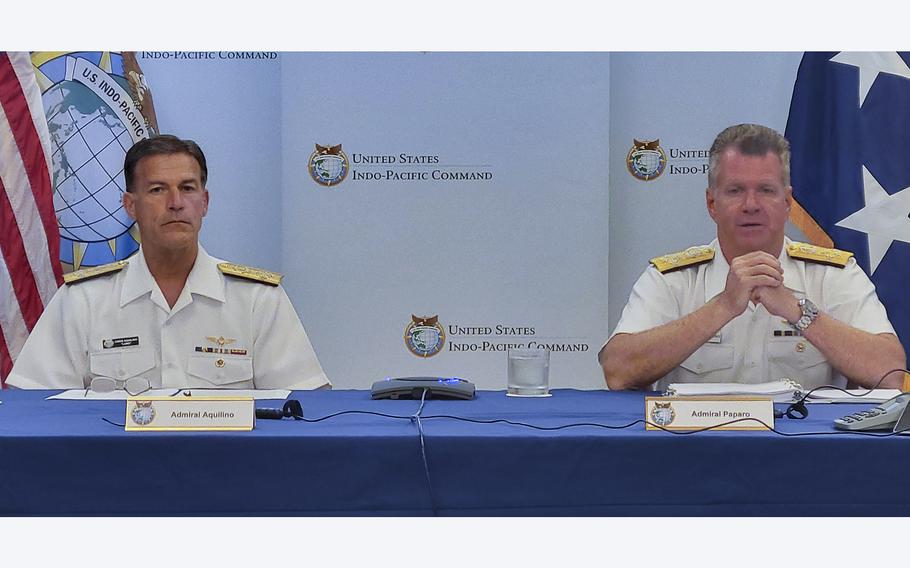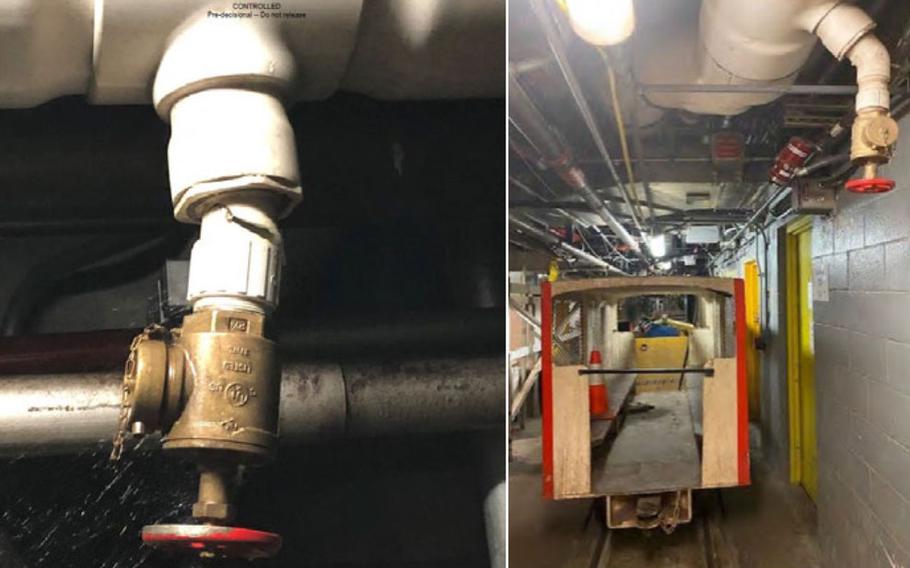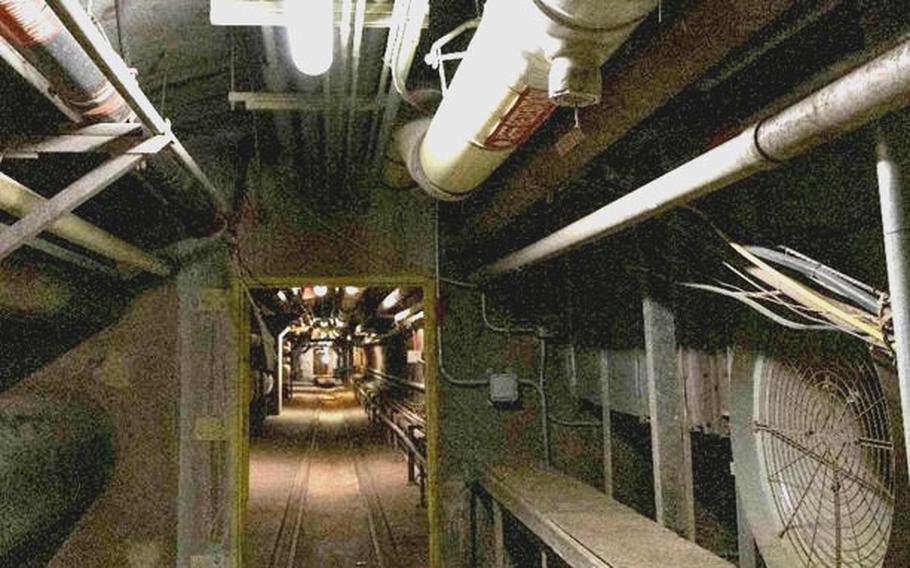
Adm. John Aquilino, left, head of U.S. Indo-Pacific Command, and Adm. Samuel Paparo, commander of U.S. Pacific Fleet, speak with reporters at Camp H.M. Smith, Hawaii, on June 30, 2022. (Wyatt Olson/Stars and Stripes)
CAMP H.M. SMITH, Hawaii — Human error was the primary cause of two separate fuel spills at a Navy storage facility in Hawaii in 2021 that contaminated drinking water for thousands of residents of military communities, according to an investigative report released Thursday.
“But human error is not the full story,” concludes the investigation ordered by Adm. Samuel Paparo, the head of U.S. Pacific Fleet, only days after residents in late November began complaining of petroleum-tainted water.
“The investigation further revealed several preventable contributing factors included a culture of procedural non-compliance; material deficiencies; poor training and supervision; ineffective command and control; absence of ownership regarding operational safety; unacceptable immediate response actions, including a lack of timely, accurate and thorough reporting; and a fundamentally flawed investigative process concerning” the first of the two spills on May 6 and Nov. 20.
Jet fuel from the spills at the Red Hill Bulk Fuel Storage Facility, a massive World War II-era underground tank farm, seeped into one of three wells the Navy uses in its water distribution system for communities on and near Joint Base Pearl Harbor-Hickam.
The contamination displaced thousands of residents for several months beginning in late November. The contaminated well remains closed as work continues to rid it of petroleum.
Defense Secretary Lloyd Austin announced on March 7 that the storage facility would be permanently closed.
The multi-phase plan for emptying and closing the facility will not be completed until the end of 2024, Meredith Berger, assistant secretary of the Navy for energy, installations and environment, said during a media roundtable Thursday at Camp H.M. Smith in Honolulu.
The roundtable also included Paparo and Adm. John Aquilino, commander of U.S. Indo-Pacific Command.
“Through everything and in every action, we will be operating at the speed of safety,” Berger said virtually from the Pentagon. The Navy will continue to refine its shut-down efforts and “look for opportunities to accelerate our timeline based on information, but not at the cost of safety,” she said.
Ruptured pipe joints
The investigation, which was completed in January, and a supplemental portion that wrapped up in April detail missteps from both spills that led directly to the well contamination.
On May 6, 2021, operators at the storage facility “improperly executed a fuel transfer procedure,” which caused two pipe joints to rupture, the report states.

A photo from the Navy’s investigation of fuel spills at the Red Hill storage facility in 2021 shows the cracked pipe, left, that released roughly 20,000 gallons of jet fuel. On the right is the rail cart that damaged the pipe. (U.S. Navy)
Roughly 21,000 gallons of jet fuel emptied into a room designed to automatically seal in the event of a leak. The leak activated sump pumps that pushed the fuel into a lengthy fire-suppression retention line, according to the investigation, but operators remained unaware of the pump action.
“The decrease in tank inventory of nearly 20,000 gallons of fuel coincident with the 6 May 2021 spill should have promoted a more critical and thorough investigation” by supervisors, the report states.
A “cursory” investigation by the Naval Supply Systems Command “failed to identify the root causes” of the spill and recommended no “meaningful corrective measures,” the newly released investigation states.
Between May and November, the weight of the missing fuel now lodged in the plastic retention line caused it to slowly sag.
“The fire suppression system is poorly designed and has not been properly maintained,” the report states.
Workers move about the lower access tunnel using a cart on rail lines, and over time the overhead retention line sagged enough for the cart to graze a valve and crack the pipe.
On Nov. 20, the cart operator discovered the pipe leaking with “the equivalent of four safety showers on ‘full blast’ at one time,” according to the investigative report.
About 20,000 gallons of fuel were recovered, but another roughly 5,000 gallons seeped through cracks in concrete, then moved relatively quickly through porous basalt bedrock and into the well shaft.
Critical shortcomings
“Had leaders at the scene questioned more critically the potential for a release to the environment, they would have acted more decisively to stop the source of the spill and demanded more resources to manage it,” the report states.
“The lack of critical thinking, intellectual rigor and self-assessment by key leaders at decisive moments exemplified a culture of complacency and demonstrated a lack of professionalism that is demanded by the high consequence nature of fuel operations,” the investigation concludes.

A photo of the lower access tunnel of the Red Hill fuel storage facility in Honolulu shows, upper right, the fire suppression system retention line that broke on Nov. 20, 2021, and released about 20,000 gallons of jet fuel. (U.S. Navy)
The investigative report released Thursday redacts all names of those operating the system or involved in the response to the spills.
Asked how many individuals have been disciplined, reassigned or fired as a result of the water crisis, Paparo said “there are a number of people who are no longer in their assigned duties.”
“Some of that remains legally privileged information,” he said.
The commander of U.S. Fleet Forces Command “will administer justice to those individuals that are identified as potentially having had substandard performance of duty or dereliction of duty,” Paparo said.
“This investigation will inform that process as well an additional probative legal process in order to administer that justice,” he said.